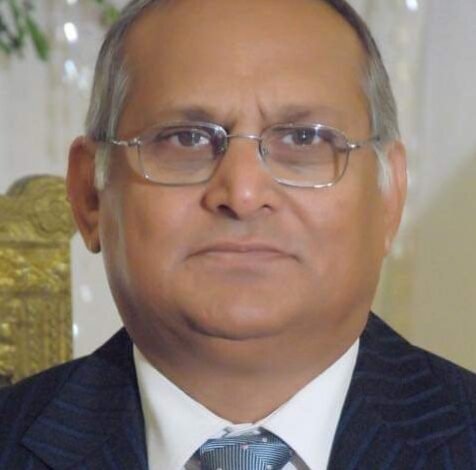The Great Realignment: India’s Pivot from Russia and Pakistan’s Fractured Ties with the U.S.

By . Ghulam Haider Shaikh
In the evolving architecture of global politics, South Asia finds itself once again at the center of shifting alliances and strategic recalibrations. The two dominant regional powers—India and Pakistan—are no longer confined to the Cold War-era binaries that once defined their foreign policy trajectories. Instead, both are actively exploring realignments in a multipolar world, influenced not only by national interests but by emerging technological and economic imperatives.
India, long considered a dependable ally of Russia, appears to be diversifying its strategic dependencies. The trend is neither abrupt nor absolute; rather, it is a calculated departure rooted in pragmatism. New Delhi’s pursuit of self-reliance under the “Atmanirbhar Bharat” vision, coupled with changing global supply chains and military innovation, has compelled policymakers to look beyond Moscow. The recent reduction in Russian arms imports—from 76% in 2009 to 36% in 2023—is a stark indicator of this shift.
Defense partnerships with Western nations, notably the United States and France, are gaining ground. The General Electric–Hindustan Aeronautics agreement to co-manufacture fighter jet engines in India and the acquisition of MQ-9B drones from the U.S. symbolize a deliberate strategic pivot. Similarly, India’s increasing participation in the Quad and joint exercises with NATO-aligned countries reflect its aspirations for global power status and its desire to counterbalance Chinese assertiveness in the Indo-Pacific.
Equally telling is the energy realignment underway. While Russian crude still plays a role in India’s import basket, the past year has seen a noteworthy pivot towards U.S. energy suppliers. India is exploring long-term arrangements for clean energy cooperation with the United States and Europe, as well as bolstering nuclear agreements with France. All this without entirely severing ties with Russia—a classic case of hedging in uncertain times.
On the other hand, Pakistan’s foreign policy trajectory illustrates a different narrative—one marked by disenchantment, strategic isolation, and reactive diplomacy. Once a “major non-NATO ally” of the United States, Islamabad today faces unprecedented diplomatic chill from Washington. The post-9/11 alliance has, over the years, eroded into skepticism and conditional engagements. Whether it was the fallout of the bin Laden raid or the repeated accusations of duplicity in the Afghan peace process, the trust deficit between the two capitals runs deep.
The recent imposition of targeted sanctions on Pakistani defense entities, in light of alleged long-range missile development, has further darkened the diplomatic mood. Additionally, Pakistan’s democratic credibility has come under scrutiny in the U.S. Congress following the controversial general elections of 2024. With key American lawmakers openly critical of the electoral process and the treatment of opposition figures, particularly former Prime Minister Imran Khan, Islamabad is fast losing bipartisan goodwill in Washington.
Amid these complications, Pakistan has deepened its strategic embrace with China. The China-Pakistan Economic Corridor (CPEC), while still beset with implementation hurdles and debt concerns, remains the flagship vehicle of this partnership. Defense cooperation has also expanded with increasing procurement of Chinese military hardware, including drones, air defense systems, and fighter aircraft. The alignment, while beneficial in certain areas, raises critical questions about over-dependence and the narrowing of strategic choices.
The contrast between India’s proactive diversification and Pakistan’s constrained pivot is stark. India is not abandoning old partners, but rather recalibrating the ratio of influence. Its foreign policy today is multidimensional—equally focused on regional security, economic leverage, and global partnerships. Pakistan, by contrast, appears to be in a mode of strategic retreat—substituting one dominant partner for another without expanding the scope of its global engagement.
There are also broader regional implications to consider. India’s growing interoperability with Western militaries enhances its deterrence capabilities against both Pakistan and China. This could widen the asymmetry in conventional military power in South Asia, further complicating crisis stability between the two nuclear neighbors. Pakistan’s increasing reliance on China could, conversely, limit its maneuverability in foreign policy, especially if U.S.-China rivalry continues to deepen.
It is also worth noting that the Indian-American diaspora, now an influential political bloc in the United States, has contributed positively to India’s image abroad. Pakistan lacks a comparable soft power vector. In international forums, this means New Delhi often arrives with greater credibility and narrative control, while Islamabad’s voice is often filtered through the lens of its strategic liabilities.
However, the situation is not beyond repair. Pakistan still holds considerable geostrategic relevance—its role in counterterrorism, regional connectivity, and Islamic diplomacy remains significant. But to reassert itself, Islamabad must revisit its diplomatic assumptions. Rebuilding trust with the U.S. requires not only addressing strategic concerns but also demonstrating a renewed commitment to political pluralism and rule of law. Strategic autonomy cannot be attained without economic resilience, and economic resilience cannot exist without institutional credibility.
India, too, must tread carefully. While diversification offers strategic autonomy, over-reliance on Western technologies could expose it to new forms of leverage and conditionality. Moreover, its assertive military posture and exclusionary domestic politics may over time complicate its rise as a truly inclusive global power.
In essence, the current moment is both a warning and an opportunity for South Asia. As global power centers shift and reconfigure, the choices that New Delhi and Islamabad make today will shape their influence for decades. India’s calculated repositioning seems to reflect a long-term vision. Pakistan’s path, however, appears defined by short-term necessity and limited leverage.
It is imperative for both nations to understand that strategic realignments are not zero-sum. The region’s stability hinges not only on who partners with whom, but also on how these partnerships are managed, diversified, and balanced against national interests. In the end, true strategic autonomy requires more than alliances—it demands foresight, flexibility, and a consistent moral compass.





